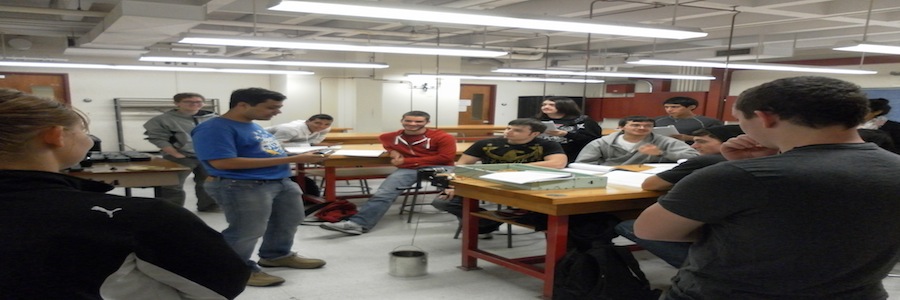Physics Lab Report Guideline
The goal of lab reports is to document your findings in physics lab experiment and clearly communicate their significance. A good lab report does more than present data; it demonstrates the writer's comprehension of the concepts behind the data. Merely recording the expected and observed results is not sufficient; you should also identify how and why differences occurred, explain how they affected your experiment, and show your understanding of the principles the experiment was designed to examine. Bear in mind that a report format, however helpful, cannot replace clear thinking and organized writing. You still need to organize your ideas carefully and express them coherently. (see Lab Report Template and Grading Rubric)
- TITLE
- INTRODUCTION
- EXPERIMENTAL PROCEDURE
- RESULTS (DATA AND CALCULATION)
This section is usually dominated by calculations, tables and figures; however, you still need to state all significant results explicitly in verbal form. The calculation for percentage (%) error between experiment and theory should be included here.
In most cases, providing a sample calculation is sufficient in the report. Leave the remainder in an appendix. Likewise, your raw data (raw data sheet from Lab Manual should be signed by instructor at the end of Lab experiment) should be placed in an appendix. - DISCUSSION (Answer questions)
- CONCLUSION
Place the title of the lab experiment, Lab course & section numbers, your name, the names of lab partners, the date, and instructor's name.
State the objective of the experiment and provides the reader with background to the experiment. Explain relevant concepts and provide any appropriate definitions. Pertinent equations should be derived in a clear, logical manner. Any relevant background information may also be included in this section.
This section includes your plan for performing the experiment. The experimental plan should be written in a step-by-step, orderly fashioned method. It describes in detail your procedure for performing the lab such that you or anyone else could re-create the experiment exactly as it was performed. Using clear paragraph structure, explain all steps in the order they actually happened, not as they were supposed to happen. If your instructor says you can simply state that you followed the procedure in the manual, be sure you still document occasions when you did not follow that exactly (e.g. "At step 4 we performed four repetitions instead of three, and ignored the data from the second repetition"). If you've done it right, another people should be able to duplicate your experiment.
This is the section where you discuss why or how the results of your lab came out the way they did. Answer all questions posed to you in the lab manual. Sometimes, there are some important questions that need to be answered in order to meet the objective, but are not directly stated. Think about this carefully and answer any such questions here. Discuss quantitatively how well the lab met with the Objective and why. The theory behind the experiment will usually make some prediction about how the results should come out. Did your experiment confirm the theory? If not, why not? How far off were your results from the theory? (error calculations come in handy here, they give you a quantitative measure of how well your theory was matched.) Give reasons why the theory and experiment did or did not match. These reasons may be due to physics, incomplete assumptions, or they may be from procedure (see error analysis below). Summarize your error analysis. This is where you discuss what may have caused your errors. Some types of error include (see your lab manual for more information on these and other types of errors): Scale Limitation Uncertainty, Parallax, Random Errors, and Systematic Errors If required, do not forget the propagation of error through your calculations! You need to be able to say how confident you are in your result. Make sure that the reason you are stating as the cause of your error predicts whether your results will be too high or too low.
This section can be very short in most undergraduate laboratories. Simply state what you know now for sure, as a result of the lab:
Must do: State what is known; Justify statement.
Might do: State significance; Suggest further experiment.

